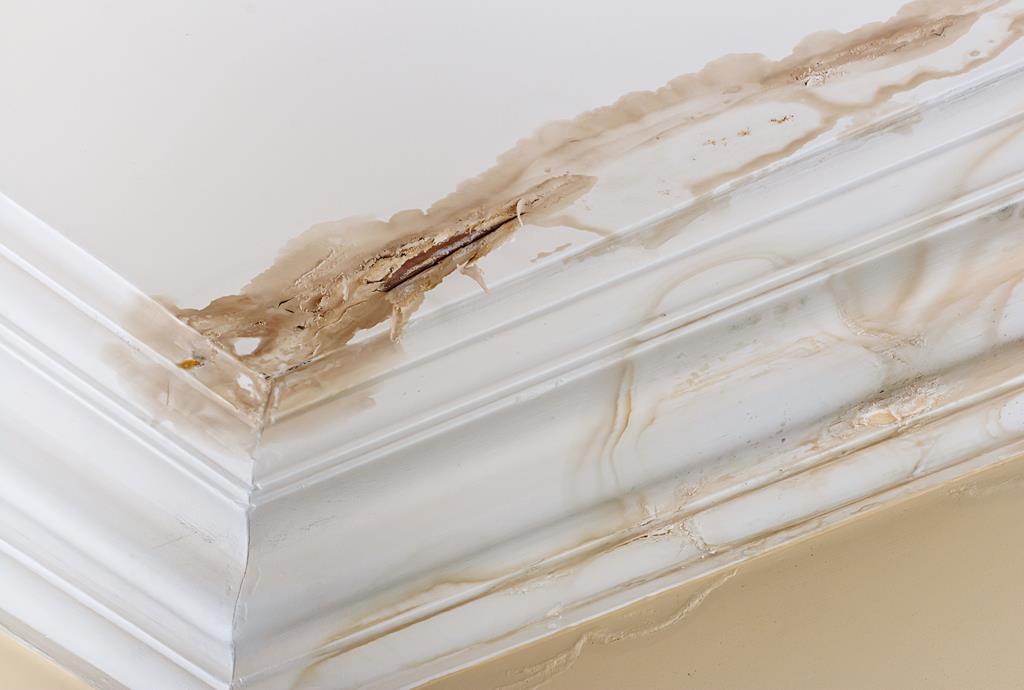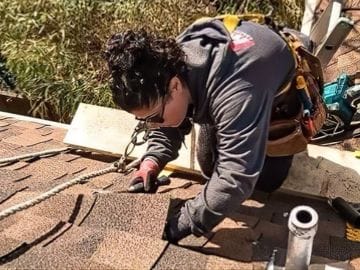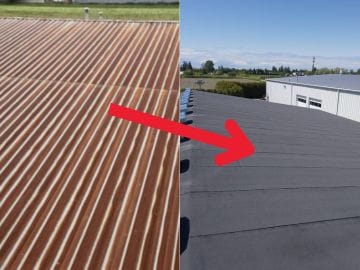To fix roof leaks, you have to find them first. Sometimes that can be more than half the battle.
To complicate things even more, the actual source of the leak can be some distance from where you are seeing evidence of unwanted moisture. Modern techniques now supplement the tried and true in roof leak detection.
To fix roof leaks, finding their location is the key
Certainly, the traditional methods of using the naked eye for inspection and “thinking like a drop of water” in terms of conditions that will create capillary action, for example, are extremely useful and still stand as valid detection tools.
But you may not always be free to do a water test or have your guess proven conclusively. The sage but simple observational techniques can always be augmented by useful tools.
Tools of the trade
- Moisture Meters. Leaks may not always be readily apparent. Electronic moisture meters were developed to detect the presence of moisture whether observable by the eye or not. There are a variety of such meters for roof and wall scanning. There is the pin type which is invasive and involves inserting a probe into the exact area being tested. It registers moisture in the area of contact and at the depth to which the pins are placed. Others are pin-less and non-invasive. These can register moisture leaks in the waterproofing membrane even through layers of coating materials and insulation several inches thick. This is done by sending a harmless signal into the depths of the area being tested. Changes in impedance are sensed and registered on the meter. Certain changes are known to indicate the presence of moisture.
- IT Cameras. Based on infrared thermography, a special camera-like device senses an area in gradations of temperature which is displayed on its own screen. Some versions are sophisticated enough to register specific temperature ranges and are designed to assign different colour values to each temperature. This produces an image that is much easier to interpret. This tool is versatile enough to help not only in locating current leaks but in the evaluation of possible moisture issues from other causes. It can be used in energy audits to pick up faults in ducting, insulation and structural areas where heat is leaking. Spotting extensive heat loss through roofs can indicate a potential for melting snow and forming ice dams, a major element in winter leaks.
- ELD (Electronic Leak Detection). For membrane-style roofs, this option allows testing without extensive flooding to find leaks and it is more accurate. A low voltage pulse generator is hooked up to the membrane and the underlying structural deck. Only a slight wetting of the surface is necessary. If there is a leak, moisture will complete a circuit and allow a flow of current between the two leads. A detector with two probes is used to sense the direction of flow. It is moved around until the actual leak location is found. A high voltage version needs no moisture at all and uses a broom-like wand with conductive bristles rather than the two probes. Both high and low-voltage versions can detect virtually invisible leaks. It is especially useful for very large, flat roofs because extensive water testing would demand a vast amount of water and may not be as accurate.
The Pros Have Tools to Detect and Fix Roof Leaks
The use of moisture meters, IT cameras and ELD (where appropriate) help avoid the need to employ the other potentially costly methods of leak location which involve tearing into walls and ceilings.
Even when a wall is opened up for this purpose, moisture detecting can help limit the scope of the invasiveness. Roofers who employ one or more of the above options will find they can complete leak detection more accurately and fix roof leaks faster.
To find your roof leaks, call us today at (604) 263-0334 or ask for a quote online. Our professional roofing team will be more than happy to help you with all your roofing needs and questions.










